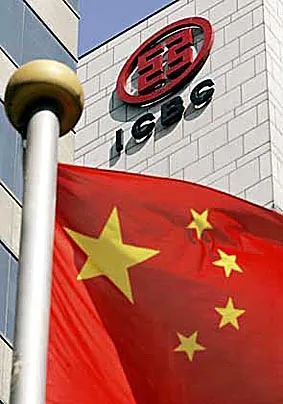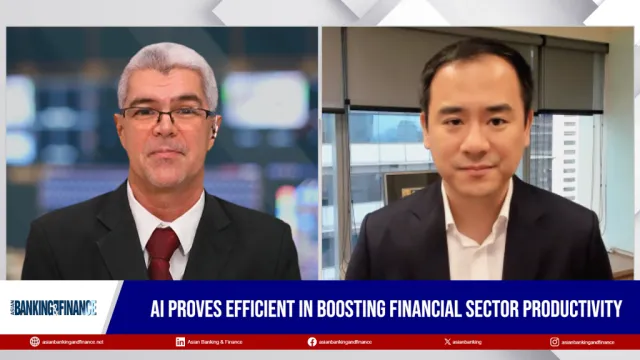
Is China in the midst of a banking crisis?
Royal Bank of Scotland says the 24% rise in aggregate loan to GDP ratio followed by years of de-leveraging could lead to a banking crisis.
However, this is most unlikely as leverage ratios of Chinese companies have actually been declining in the past three years.
Here’s more from RBSM:
| There are now renewed worries about the Chinese banking system, and the potential risk of a hard landing should a banking crisis occur. We take a closer look in this report. The issue is not new - in the wake of the global financial crisis the government unleashed massive economic stimulus to counter the external slowdown. The aggregate loan to GDP ratio increased from 100% to 124% in 2010. This followed several years of de-leveraging during 2003 and 2008. The worry is that credits disbursed so quickly could result in non-performing loans and generate systematic banking crisis, and ultimately drag down growth. The recent experience is often compared to China's bank restructuring in the past, and many fear a repeat of the past episodes. Though banks' future lending needs to be monitored, at this point we consider the likelihood of a banking crisis in China very low. First of all, the lending in the past two years was not associated with a broad increase of corporate leverage. In fact Chinese firms are generally in good financial conditions. The latest data suggests that Chinese companies actually have seen their leverage ratios decline in the past three years, on the back of strong profitability and retained earnings. Most sectors have seen a decline in leverage. Property development was the only main sector that shows the opposite trend of rising leverage but it accounts for only about 6% of total loans. In fact, the average leverage ratio of Chinese companies is one of the lowest among key economies and emerging markets. At the same time, they have maintained one of the strongest profitability. Rather than a broad increase in corporate borrowing, the rise of loans in the past two years was mostly driven by the government-affiliated platforms (i.e. LGFVs) to finance infrastructure projects. Total loans to these government-affiliated entities amount to about RMB 7-9 trillion. The increase in LGFV loans account for almost the entire "extra" loan increase. Put differently, excluding these loans the loan-to-GDP ratio would have stayed at the same level as in 2007-2008. To be sure, some of these loans may face repayment risks (the banking regulator CBRC put the share of risky loans to LGFV at one-third of this lending). Large infrastructure spending has been a typical countercyclical tool the Chinese government uses. Given banks' financial networks and their traditional dominance in China's financial intermediation, they were used as the main conduit for the quick disbursement of funds when the global crisis hit. In doing so, the estimated repayment risks thus rested with the banks rather than the government. If indeed one third of the loans to LGFV (amounting to about 2-3 trillion RMB) become non-performing, without fiscal intervention Chinese banks will likely need to raise additional capital. It seems unlikely that the government would stay on the sidelines though. Much of the spending represented fiscal outlays in nature. In addition, there are plenty of policy levers to pull as the government now enjoys a strong financial position. The debt/GDP ratio of the central government is in the mid-teens, compared to over 40% in much of the 1990s, and government revenue collection has strengthened. The estimated non-performing loans account for about 6% of total loans, a far cry from the estimated 40% defunct bank assets in late 1990s. If the entirety of the NPL is taken over by the government, government debt will stand at less than 30% of GDP, way below the debt ratios observed in most advanced economies and emerging markets. The interest payment by the government would rise to less than ¾% of GDP (low interest rate helps), and is quite manageable. From a macro standpoint a fiscal resolution represents a cleaner and less risky solution and is generally expected. Last but not least, lending is slowing, and this helps to reducing the risk of new bad credits. Though off-balance sheet lending increased recently, this doesn't alter the broad declining trend. Going forward it's important that lending for social needs will not be a repeated pattern. We are hopeful in that regard; in the absence of large shocks and need for quick actions, the chance that the government will rely mainly on banks to finance social projects seems low. Will the slowdown in credits hit growth? In our view it's misleading to link credit growth directly with real growth. First of all, while lending is slowing, new credits are still abundant relative to GDP. Second, over the last two years, firms have accumulated large amount of liquid assets, mostly in the form of cash deposits. These can provide important sources of internal financing, though the distribution may be very uneven. The early part of the analysis also suggests that corporate profits and growth have not been solely driven by liquidity and leverage. |

 Advertise
Advertise



